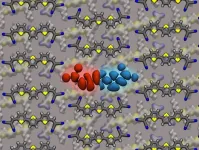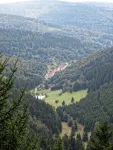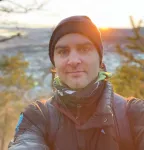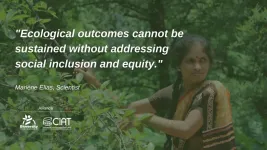(Press-News.org) A combination of ibrutinib and venetoclax was found to provide lasting disease remission in patients with newly diagnosed chronic lymphocytic leukemia (CLL), according to researchers at The University of Texas MD Anderson Cancer Center. Findings from the single-institution Phase II study were published today in JAMA Oncology and provide the longest follow-up data on patients treated with this drug regimen.
Lead researchers included Nitin Jain, M.D., associate professor of Leukemia, William Wierda, M.D., Ph.D., professor of Leukemia; and Varsha Gandhi, Ph.D., department chair ad interim of Experimental Therapeutics.
MD Anderson researchers previously reported results from this study showing that ibrutinib and venetoclax were effective when given together for high-risk and older patients with the disease. This report offers an additional two years of follow-up data and statistics on bone marrow undetectable measurable residual disease (U-MRD) after treatment. Overall, the three-year progression-free survival was 93% and the three-year overall survival was 96%. The response rates were the same for the high-risk subgroup of patients.
"CLL is the most common leukemia in the United States and was originally treated with chemoimmunotherapy," said Jain. "These long-term results show that two years of oral targeted therapy can achieve lasting disease remission for patients with CLL."
Researchers followed 80 previously untreated patients with a median age of 65 years, 30% of whom were over age 70. Overall, 92% had high-risk genetic anomalies. The median follow-up for all 80 patients was 38.5 months. Trial participants were 94% white, 4% other, 1% American Indian or Alaska Native and 1% unknown.
The U-MRD responses improved with ongoing combined ibrutinib plus venetoclax. After 12 cycles of combination therapy, 56% of patients achieved bone marrow U-MRD, and after 24 cycles of combination therapy, 66% of patients achieved bone marrow U-MRD remission. A total of 75% of patients achieved bone marrow U-MRD remission at any time during the study.
"MRD is one of the most important prognostic markers at the end of leukemia treatment," said Jain. "The majority of patients achieved bone marrow MRD remission and no patients on the trial had CLL disease progression."
The research team continues to monitor the patients' MRD every six months and is working on further correlative studies. The treatment was well-tolerated and the toxicity profile of both drugs was consistent with other studies, with no additional toxicity observed with the combination.
Several ongoing studies are investigating combined BTK inhibitors with venetoclax, including the CAPTIVATE trial, which reported results at the recent American Society of Clinical Oncology (ASCO) annual meeting, the UK FLAIR trial, the CLL17 trial, and the CLL GLOW trial, which will report Phase III results at European Hematology Association (EHA) Virtual Congress. Data from these trials and others will clarify the duration and role of this treatment regimen.
"I think this will be one of several standard of care treatments available for patients with CLL," Jain said. "There are pros and cons to each of those approaches, and physicians will have to decide which option is best for their patient."
INFORMATION:
The trial was supported by the Chronic Lymphocytic Leukemia (CLL) Moon Shot®, part of
MD Anderson's Moon Shots Program®, a collaborative effort designed to accelerate the development of scientific discoveries into clinical advances that save patients' lives.
Additional research support was provided by AbbVie, the Andrew Sabin Family Foundation, the CLL Global Research Foundation and the National Cancer Institute (P30CA016672).
A full list of co-authors and author disclosures can be found in the paper.
The 30,000 or so genes making up the human genome contain the instructions vital to life. Yet each of our cells expresses only a subset of these genes in their daily functioning. The difference between a heart cell and a liver cell, for example, is determined by which genes are expressed--and the correct expression of genes can mean the difference between health and disease.
Until recently, researchers investigating the genes underlying disease have been limited because traditional imaging techniques only allow for the study of a handful of genes at a time.
A new technique developed by Jun Hee Lee, Ph.D., and his team at the University of Michigan Medical School, part of Michigan Medicine, uses high-throughput ...
A study published in the June 10, 2021 issue of Cell describes a remarkable new mechanism by which the body's own immune system can eliminate cancer cells without damaging host cells. The findings have the potential to develop first-in-class medicines that are designed to be selective for cancer cells and non-toxic to normal cells and tissues. If successful, this discovery may improve the practice of precision medicine by ensuring the right drug is delivered at the right dose at the right time.
Our immune system plays a critical role in our ability to fight off diseases ...
Organic semiconductors have earned a reputation as energy efficient materials in organic light emitting diodes (OLEDs) that are employed in large area displays. In these and in other applications, such as solar cells, a key parameter is the energy gap between electronic states. It determines the wavelength of the light that is emitted or absorbed. The continuous adjustability of this energy gap is desirable. Indeed, for inorganic materials an appropriate method already exists - the so-called blending. It is based on engineering the band gap by substituting atoms in the material. This allows for a continuous tunability as, for example in aluminum gallium arsenide semiconductors. Unfortunately, this is not transferable to organic semiconductors ...
Leipzig. Soot particles from oil and wood heating systems as well as road traffic can pollute the air in Europe on a much larger scale than previously assumed. This is what researchers from the Leibniz Institute for Tropospheric Research (TROPOS) conclude from a measurement campaign in the Thuringian Forest in Germany. The evaluation of the sources showed that about half of the soot particles came from the surrounding area and the other half from long distances. From the researchers' point of view, this underlines the need to further reduce emissions of soot that ...
It is generally agreed that sperms "swim" by beating or rotating their soft tails. However, a research team led by scientists from City University of Hong Kong (CityU) has discovered that ray sperms move by rotating both the tail and the head. The team further investigated the motion pattern and demonstrated it with a robot. Their study has expanded the knowledge on the microorganisms' motion and provided inspiration for robot engineering design.
The research is co-led by Dr Shen Yajing, Associate Professor from CityU's Department of Biomedical Engineering (BME), and Dr Shi Jiahai, Assistant Professor of the Department of Biomedical Sciences (BMS). Their findings have been published in ...
An electrode coating just one molecule thick can significantly enhance the performance of an organic photovoltaic cell, KAUST researchers have found. The coating outperforms the leading material currently used for this task and may pave the way for improvements in other devices that rely on organic molecules, such as light-emitting diodes and photodetectors.
Unlike the most common photovoltaic cells that use crystalline silicon to harvest light, organic photovoltaic cells (OPVs) rely on a light-absorbing layer of carbon-based molecules. Although OPVs cannot yet rival the performance of silicon cells, they could be easier and cheaper to manufacture at a very large scale using ...
The type of material present under glaciers has a big impact on how fast they slide towards the ocean. Scientists face a challenging task to acquire data of this under-ice landscape, let alone how to represent it accurately in models of future sea-level rise.
"Choosing the wrong equations for the under-ice landscape can have the same effect on the predicted contribution to sea-level rise as a warming of several degrees", says Henning Åkesson, who led a new published study on Petermann Glacier in Greenland.
Glaciers and ice sheets around the world currently lose more than 700,000 Olympic swimming pools of water every day. Glaciers form by the transformation of snow into ice, which is later melted by ...
With the start of the United Nations' Decade on Ecosystem Restoration, which runs through 2030, a tremendous amount of money and effort will be put into re-growing forests, making over-exploited farmland productive, and reviving damaged marine environments. This is a good, and vital, initiative. Without quick action to clean up the fallout of humanity's scorched-earth economic systems, goals on hunger, biodiversity and climate will be unattainable.
But in examining restoration projects already underway across the globe, a group of scientists has found that restoration action is at risk of failure if it doesn't make ...
Palaeoclimatologists study climate of the geological past. Using an innovative technique, new research by an international research team led by Niels de Winter (VUB-AMGC & Utrecht University) shows for the first time that dinosaurs had to deal with greater seasonal differences than previously thought.
De Winter: "We used to think that when the climate warmed like it did in the Cretaceous period, the time of the dinosaurs, the difference between the seasons would decrease, much like the present-day tropics experience less temperature difference between ...
Inaccessible workplaces, normative departmental cultures and 'ableist' academic systems have all contributed to the continued underrepresentation and exclusion of disabled researchers in the Geosciences, according to an article published today (Thursday 8 June) in Nature Geosciences.
The article argues that changes to both working spaces and attitudes are urgently needed if institutions are to attract, safeguard and retain people with disabilities.
Anya Lawrence, a disabled early career researcher in the University of Birmingham's School of Geography, Earth and Environmental Science and author of the piece says:
"Disabled geoscientists like myself face barrier after barrier on a daily ...




